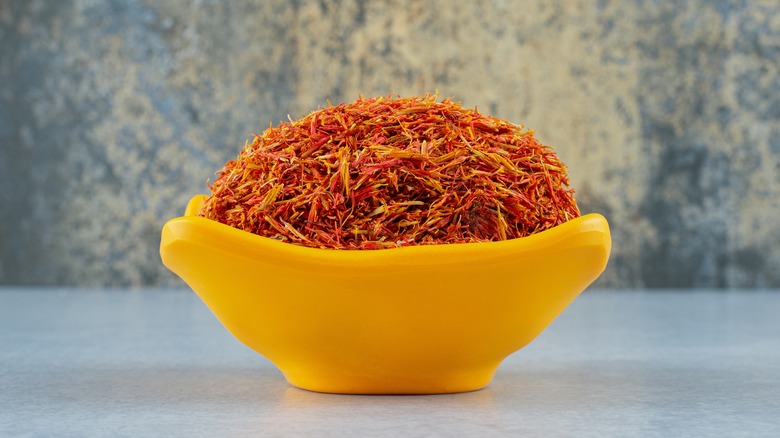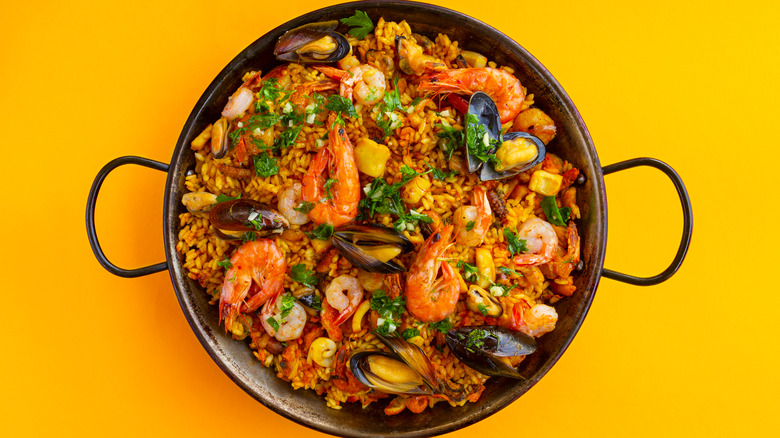The Tastiest Way To Prep Fresh Saffron Is To Roast It
Situated between a forest of argan trees to the west and rose cultivations to the east is the Moroccan mountain town, Taliouin, home to a lively souk that's been drawing in Michelin chefs for years. What for? Saffron, of course. Picked, produced, and traded the same way as it has been for millennia, they can't leave Morocco without it. When chefs do finally bring it home, they know better than anybody that in order to bring out the "king of spice's" most noble flavors and aromas, they'll need to roast it.
The same should go for you — even if your journey to get it was to the same grocery store you visit every week. If you're purchasing your saffron in the spice aisle, the odds are you're paying top dollar, since it only blooms once a year and is picked by hand. Fortunately, a little bit of saffron can go a long way but only if you prepare it accordingly. To get the most aromatic, flavorful, and brightly-hued saffron for your Persian tahdig, Spanish paella, cake, or Moroccan tagine, you'll need to know how to roast it.
How to roast saffron for the best flavor
If it's available, purchase the saches or spice containers of whole saffron threads rather than the pre-ground. Then, before you use it in a recipe, give yourself about half an hour to prepare it the way you should. Simply add a layer of tin foil to a frying pan with the corners folded up. Then, when the pan is warm, add your saffron threads and let them sit for about 30 seconds. This step helps release the saffron's natural oils and aromas, creating a more intense flavor for your dish. Just like any other dried herb, saffron also needs hydration in order to draw out all of its aromas.
So, after 30 seconds on a pan, pour the tin foil of saffron threads into a mortal and pestle and grind them into a fine powder. Then, you can pour the powder into about two tablespoons of hot water or stock, where you can watch its color and aromas bleed into the liquid over time. You should let it sit for 15 to 20 minutes, but once it's finished it can be added to your dish at any point in the cooking process. People tend to infuse most of the saffron early on and save a few extra drops for a finishing touch.

